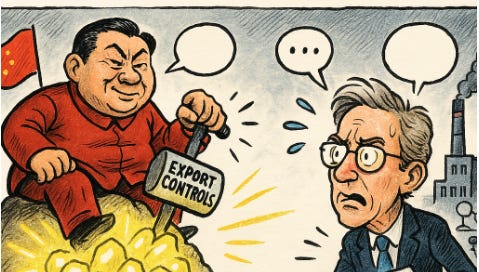So, here’s a headline I didn’t expect to see this week: “Pentagon to become largest shareholder in rare earth miner MP Materials; shares surge 50%.” Yep, you read that right—the U.S. Department of Defense is about to own a big chunk of a public company. Not your everyday government move!
Here’s the quick version: The Pentagon, through its Office of Strategic Capital (OSC), is putting $400 million into MP Materials, a company that digs up rare earth minerals in the U.S. (the only one, actually). They’re buying some fancy preferred shares that can turn into regular stock later. On top of that, they’re getting warrants for even more shares and promising a $150 million loan soon. If the Pentagon cashes in all its chips, it’ll own about 15% of the company—making it the biggest shareholder.
And Wall Street? They loved it. MP’s stock shot up 50% in a day.
This isn’t the usual military playbook. Normally, the government just buys stuff it needs—planes, tanks, whatever. But now, thanks to the OSC (which is basically the Pentagon’s new “investment arm”), they’re acting a bit like a venture capital fund. Direct investments, convertible shares, boardroom influence.
Rare earths are a big deal. They’re used in everything from fighter jets to smartphones. Right now, China pretty much controls the global supply. MP Materials runs the only U.S. mine for these minerals and is building a new factory to make the magnets that go into high-tech defense gear.
Here’s the kicker: The Pentagon isn’t just investing, they’re promising to buy everything MP’s new factory makes for the next 10 years. And if prices drop below $110 per kilo, the government will make up the difference. Basically, taxpayers are making sure MP Materials has steady cash flow for a decade.
Funny thing is, private banks were already lining up. JPMorgan and Goldman Sachs are chipping in a cool $1 billion. So, this isn’t about MP being desperate for money. It’s about the Pentagon wanting to make sure the company stays focused on U.S. security needs and doesn’t get tempted by foreign buyers or markets.
This kind of government-corporate mashup isn’t totally new (think Amtrak or Fannie Mae), but it’s always messy. When the government is your biggest investor, your main customer, and your regulator all at once, things can get weird fast.
MP’s CEO, James Litinsky, was quick to say, “This isn’t nationalization. We’re still a public company, just with a powerful new partner.” Sure, but when Uncle Sam is writing the checks and calling the shots, it’s hard not to wonder who’s really in charge.
Let’s be real: This is about keeping rare earths out of China’s hands and making sure the U.S. military isn’t stuck waiting for shipments from halfway around the world. With China tightening its grip on exports, the U.S. is scrambling to build up its own supply chain.
But here’s where things get tricky. Even with this expansion, the U.S. is still a minor player compared to China when it comes to rare earth reserves and production.
To put things in perspective, China holds about 44 million metric tons of rare earth reserves and produces roughly 270,000 metric tons annually. The United States, by comparison, has about 1.9 million metric tons in reserves and produces around 45,000 metric tons a year. That means China controls about 48% of the world’s rare earth reserves and nearly 70–90% of global production and processing capacity, while the U.S. has only about 4% of China’s reserves and produces roughly one-sixth as much every year.
https://www.china-briefing.com/news/chinas-rare-earth-elements-dominance-in-global-supply-chains/#:~:text=The%20US%20comes%20in%20at%20a%20distant,2024%2C%20or%2011.5%20percent%20of%20global%20output.
MP Materials’ new factory is expected to produce up to 10,000 metric tons of rare earth magnets per year by 2028, but for context, China produced an estimated 300,000 tons of NdFeB magnets in 2024. MP’s Texas plant will make just 1,000 tons of magnets a year, about 0.3% of China’s capacity. So, what does this all mean?
The U.S. expansion will help reduce the most acute supply chain vulnerabilities, especially for defense and critical industries, but it won’t come close to matching China’s scale or dominance. The new U.S. facilities will provide a secure, domestic source for certain rare earth products, especially for military and high-tech uses, but the broader U.S. economy will still largely depend on imports, mostly from China. And even with increased mining, the U.S. still lacks large-scale processing and refining capacity, a segment overwhelmingly controlled by China.
Industry experts estimate that, even if everything goes right, U.S. and allied production could meet 40–50% of U.S. strategic needs by 2027–2028, but not fully solve the dependency problem. The U.S. military alone requires an estimated 3,000 tons of permanent magnets annually, while MP Materials’ expanded capacity will only partially cover this demand.
So tell me, who needs who more? China or the US? May peace is a best way out








